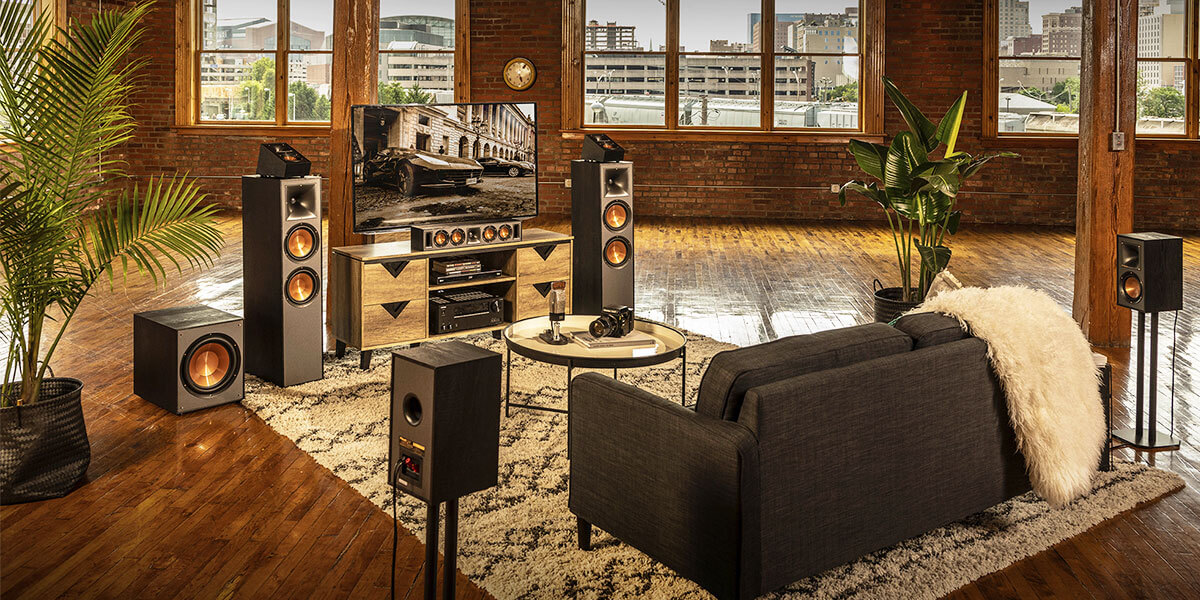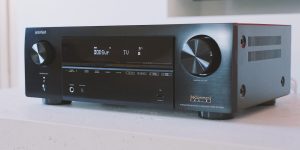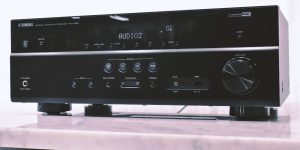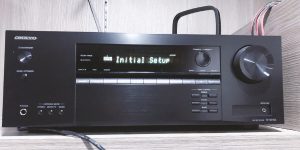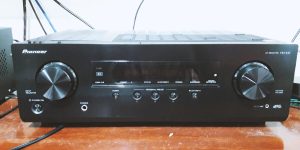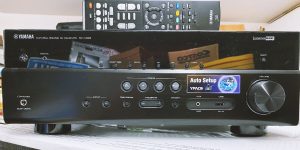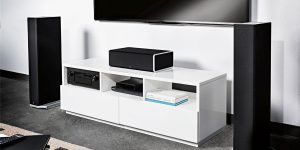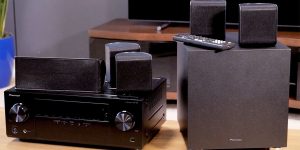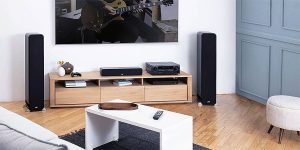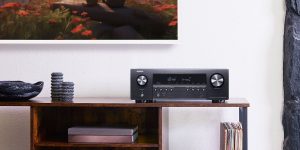Just as the positioning of musicians influences the richness and precision of a musical piece, surround sound speaker placement profoundly shapes the immersive experience of your home theater entertainment. Get ready to discover how the correct arrangement of speakers can turn your living room into an arena where every note, whisper, and explosion comes alive in perfect harmony. It’s not just about hearing; it’s about feeling, experiencing, and being transported to new dimensions.
Basic speaker placement
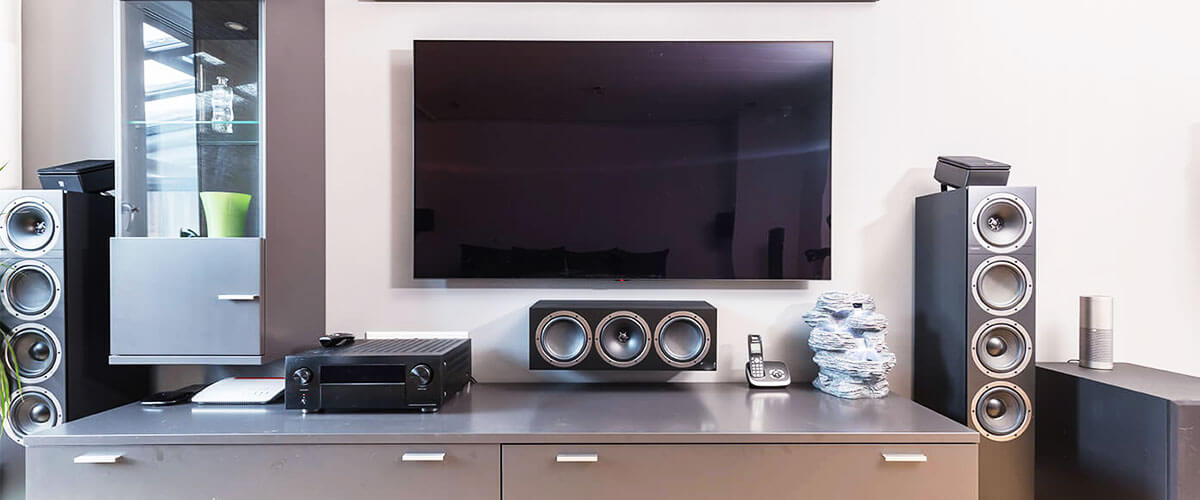
Front speakers
Place the front speakers on either side of the main listening area. They should be at an equal distance from the primary listening position. Angle the speakers slightly toward the central listening area to create a “sweet spot” where the sound converges. For floor-standing speakers, position them at ear level when seated. Bookshelf speakers can be elevated on speaker stands for proper alignment.
Center speaker
Ideally, the center speaker placement is either above or below the television, ensuring it’s aligned with the front speakers. If possible, this speaker placement height has to be at the same level as the front speakers. Ensure the center speaker is oriented correctly. If it has a distinct top or bottom, follow the manufacturer’s recommendations.
Subwoofer
Subwoofers are less directional, providing flexibility in placement. Common locations include a corner of the room, near the front speakers, or along the front wall. Experiment with placement to find the spot that produces the most balanced and impactful bass. While corners can enhance bass, placing the subwoofer directly in a corner may lead to boomy or uneven bass.
Surround speakers
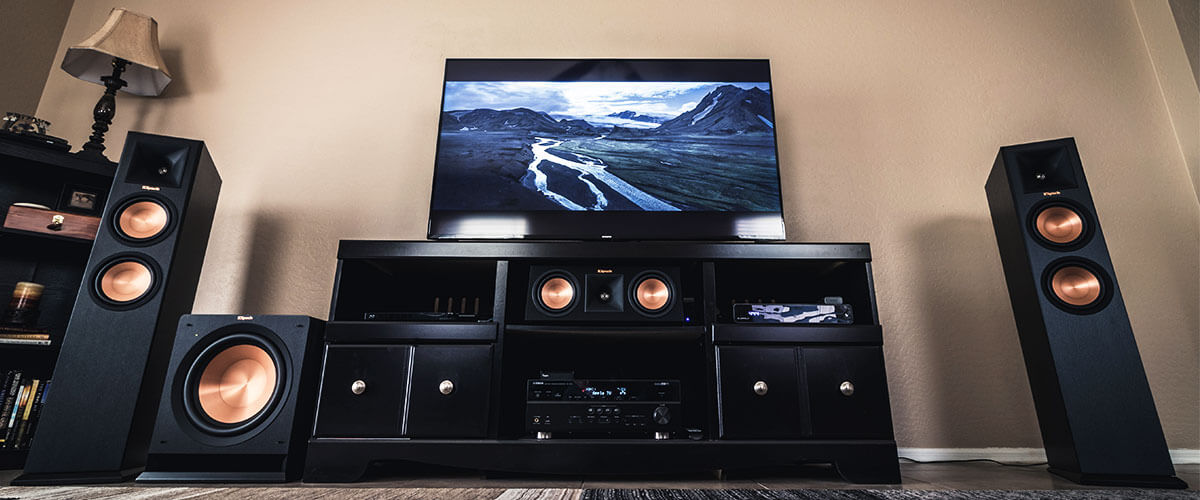
These play an important role in creating an immersive audio experience, whether for home theater setups or multi-channel music systems. Proper surround sound speaker position enhances the sense of space and envelops the listener in a three-dimensional soundstage.
5.1 and 7.1 speakers configuration
In addition to the above-described speakers’ placement, setting up surround speakers in a 5.1 or 7.1 configuration involves careful placement to achieve optimal sound distribution. Place the surround left (SL) and surround right (SR) speakers on either side of the main listening area. Aim the speakers slightly toward the center of the room to create a spacious sound field. Position them at or above ear level when seated. Consider increasing the distance between the side surround speakers and the main listening area in larger rooms for a more enveloping effect.
In a 7.1 speaker placement, you have to put the rear surround speakers behind the primary listening area. Strive for symmetry in their placement. They should be equidistant from the central listening position to maintain a balanced soundstage. Ensure that there are minimal obstructions between the rear surround speakers and the main listening area. Objects like furniture or walls can impact sound dispersion.
9.1 And 11.1 speakers configuration
These configurations include additional speakers compared to standard 5.1 or 7.1 systems.
In the case of the 9.1 setup, you add the front height left and the front height right speakers. Added to create a three-dimensional soundstage, these speakers are placed above and angled towards the front left and right speakers.
The 11.1 configuration extends the audio channels even further. Front wide left and right are introduced to expand the width of the soundstage and are placed wider apart than the front left and right speakers. In addition, there are top surround left and right speakers positioned above and slightly behind the listening area, contributing to overhead or height effects. They can be installed in the ceiling or mounted on the walls.
Dolby Atmos setup
Dolby Atmos is an advanced audio technology that adds a vertical dimension to traditional surround sound, allowing it to move freely around the listener in a three-dimensional space. The setup involves specific speaker configurations to achieve an immersive audio experience.
So, you start with a traditional surround sound setup and then add height speakers to create overhead sound effects. There are two main types. Atmos-enabled speakers have built-in upward-firing drivers that bounce sound off the ceiling to create the illusion of overhead effects. They can be placed on top of existing front and surround speakers.
Another option is dedicated ceiling speakers installed in or on the ceiling for a more precise overhead experience. Additional Dolby Atmos configurations include speakers at the top front and top rear positions for an even more immersive experience.
So, for 5.1.2 Dolby Atmos, you include a traditional 5.1 speaker placement with the addition of two height speakers for Dolby Atmos effects. In the case of the 9.1.4 Dolby Atmos configuration, you have the front, center, and surround speakers, along with height and additional top front and top rear speakers.
Room acoustics and speaker placement
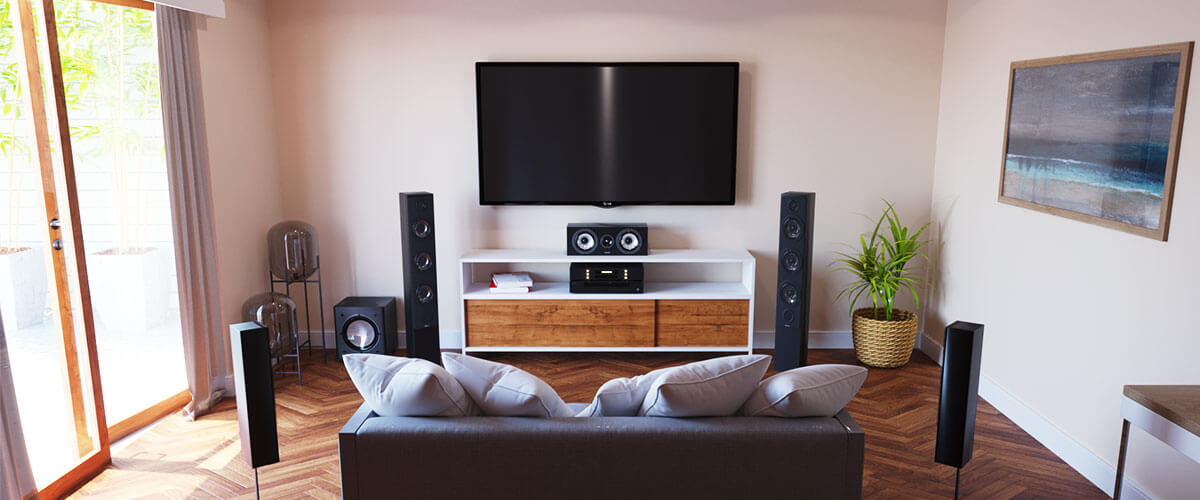
The characteristics of a room, such as its size, shape, furnishings, and materials, can impact the way speakers produce and distribute sound. Optimizing speaker placement in different types of rooms involves considering some acoustical factors I’m going to describe.
Small rooms can create challenges with sound reflections, leading to a potential buildup of bass frequencies. So, make sure to place speakers away from walls to minimize bass reflections. Experiment with speaker toe-in (angling speakers towards the listening position) to control sound dispersion. Use acoustic treatments like bass traps and diffusers to address reflections and standing waves. Larger rooms may experience sound dispersion issues, resulting in less focused audio. In this case, placing speakers closer to the center of the room will minimize wall interactions.
If you have a square room, it can create standing wave issues, leading to uneven bass response. I’d recommend a non-symmetrical speaker placement to disrupt standing waves.
Adding absorption panels on opposite walls to reduce sound reflections can be helpful.
Rectangular rooms may have pronounced axial modes, causing uneven frequency response. I would align speakers along the shorter wall and use diffusion panels on longer walls to disperse sound reflections.
Calibration and fine-tuning
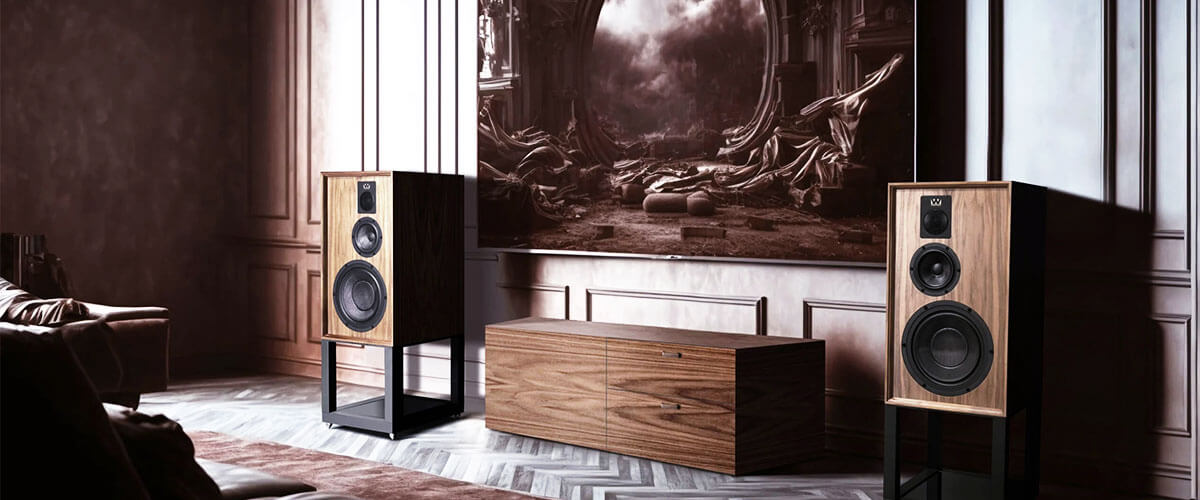
Calibration helps to balance speaker levels, set the correct distances, and integrate the subwoofer seamlessly. Following my guide ensures that your system delivers a precise and immersive audio experience:
- Ensure you have a sound level meter (a smartphone app with a dB meter can work).
- Place the sound level meter at the primary listening position, roughly at the ear level.
- Using the remote control, access the setup menu on your AV receiver.
- Confirm that the speakers are set up correctly in the equipment’s menu.
- Enter the speaker level adjustment menu.
- Play a test tone for each speaker and adjust the volume on each channel until the sound level meter reads the desired level (usually around 75dB).
The next thing to do is enter the speaker distance adjustment menu. Input the physical distance from each speaker to the listening position. The receiver uses this information to time-align the audio. If your system includes a subwoofer, enter the subwoofer calibration menu and set its level and crossover frequency.
Of course, the easier way is to use the receiver’s auto-calibration system (e.g., Audyssey, YPAO). You just need to follow the prompts to let the system automatically measure and adjust speaker levels, distances, and EQ settings.
Common mistakes to avoid

There are so many scenarios of typical mistakes in speaker placement that I would like to talk about, but let’s consider the main ones. Maybe you’re the one who did this and would like to know the solution.
Ignoring room acoustics. This usually leads to unwanted reflections and standing waves. Use acoustic treatments such as rugs, curtains, and diffusers to address acoustical challenges. Consider room geometry when placing speakers.
Mismatched speaker levels. It results in an imbalanced audio experience. Don’t forget to calibrate them using a sound level meter or the auto-calibration feature on your AV receiver.
Focusing only on front speakers. Neglecting surround speakers can impact the immersive experience. Make sure you balance the levels of front, center, and surround speakers.
Placing surround speakers too high or low. Such a mistake can disrupt the intended audio effects. Position surround speakers at or slightly above ear level when seated. Aim for an immersive sound experience without overshadowing the main speakers.
Inadequate cable management. Messy cables affect the aesthetics and potentially cause interference. Try to organize and route cables neatly. Keep speaker cables away from power cables to prevent interference.

